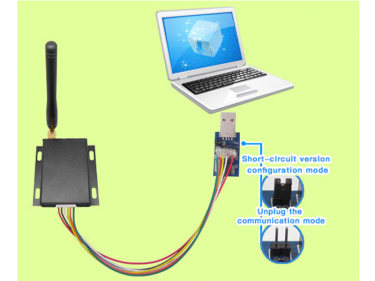Definition and classification of wireless module
Dec . 2021
Most of the modules involved in the IoTs are wireless communication modules, referred to as wireless modules. The principle of the wireless module is to send or receive electromagnetic wave signals and convert them into information that we can understand. The role of the wireless module is to connect things with things, so that all kinds of IoTs terminal devices can realize information transmission capabilities, and all kinds of smart devices have an IoTs information interface.
There are so many types of wireless modules on the market, how should we distinguish them? Based on different application scenarios and user needs, different wireless communication technologies have been developed. Below, NiceRF Wireless will analyze it in detail for everyone.

Wireless module classification1: Bluetooth
Bluetooth is a wireless module that we have more daily contact with. This technology was invented by the then telecommunications giant Ericsson in 1994. It is a wireless technology standard that can realize fixed terminal equipment, mobile terminal equipment and personal area networks. For short-distance data exchange, UHF radio waves in the 2.4~2.485GHz ISM band are used.
The complexity of Bluetooth wireless technology is relatively high; the device networking speed is fast, 10 seconds; the integration and reliability are very high; the transmission rate is generally 1Mbps; the cost is low, and the installation is relatively simple. It is a suitable short-distance wireless communication technology.

Wireless module classification2: Wi-Fi
WiFi wireless technology is very attributed to everyone, and it is the most wireless communication technology we come into contact with daily. It is a wireless local area network technology created with the IEEE 802.11 standard. This technology converts all wired network signals into radio wave signals, and other terminal devices connect to WiFi through wireless modules to realize wireless network communication.
WiFi technology coverage is generally within 100 meters, the technology is more complicated, the transmission rate can reach 54Mbps, the working frequency band is 2.4GHz, and the transmission power is less than 100mW. Compared with Bluetooth wireless communication, the data security performance is poor. However, the invention of WiFi is very in line with modern personal and social needs, and its development prospects are very huge.

Wireless module classification3: ZigBee
ZigBee wireless module communication technology is a low-power local area network protocol based on the IEEE802.15.4 standard. It was formally established in August 2001. At the beginning of its establishment, due to the hasty release of the version, there were certain errors, and the subsequent development continued to improve.
ZigBee wireless communication technology is similar to Bluetooth wireless communication technology, both are short-range wireless communication technologies, but Bluetooth wireless communication technology has many shortcomings, such as high power consumption, high complexity, short communication distance, etc., which is only suitable for family and personal use. The development of ZigBee technology is to meet the needs of industrial automation. It has simple layout, anti-interference, reliable transmission, convenient use, and low cost. The communication distance has been increased from 10 meters in Bluetooth to hundreds of meters in the open, and indoors can reach about 50 meters.

Wireless module classification4: Wireless data transmission station
Wireless data transmission station (wireless data transmission module) refers to a high-performance professional data transmission station realized with the help of DSP digital signal processing technology and software wireless point technology. Digital radio can be understood as a communication medium. Like optical fiber and microwave, it has a certain range of use. The transmission distance of the digital radio is very far, suitable for various complicated environments, the transmission rate is 19.2Kbps, but the terminal equipment is more expensive, the use cost is also high, and the installation is more complicated.

 +86-755-23080616
+86-755-23080616
 sales@nicerf.com
sales@nicerf.com
Website: https://www.nicerf.com/
Address: 309-314, 3/F, Bldg A, Hongdu business building, Zone 43, Baoan Dist, Shenzhen, China


 English
English







